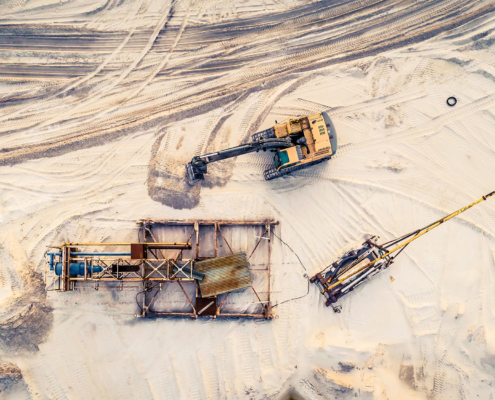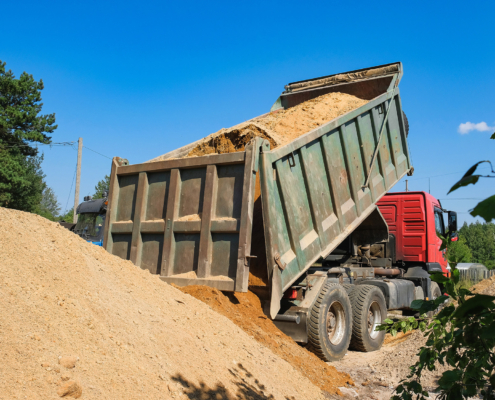 https://pontotocsandandstone.com/wp-content/uploads/2025/09/Frac-Sand-Market-Trends-and-Forecasts.jpg
1250
2000
AbstraktMarketing
/wp-content/uploads/2021/08/Pontotoc-White-Logo.png
AbstraktMarketing2025-09-05 20:26:142025-12-28 16:14:39Navigating Growing Demand: Frac Sand Market Trends and Forecasts
https://pontotocsandandstone.com/wp-content/uploads/2025/09/Frac-Sand-Market-Trends-and-Forecasts.jpg
1250
2000
AbstraktMarketing
/wp-content/uploads/2021/08/Pontotoc-White-Logo.png
AbstraktMarketing2025-09-05 20:26:142025-12-28 16:14:39Navigating Growing Demand: Frac Sand Market Trends and ForecastsReducing Carbon Footprint: Carbon-Neutral Mining Practices
In an era where climate change is a pressing global concern, many industries are actively seeking ways to reduce their carbon footprint. The mining industry is one sector that’s making remarkable strides in this endeavor. Within mining, frac sand mining has emerged as a leader in adopting carbon-neutral practices.
Why Is Carbon Reduction in Mining Crucial?
Reducing the carbon footprint in the mining industry is crucial for mitigating climate change and promoting sustainable practices. Carbon-neutral mining practices and offsetting emissions play a significant role in achieving this goal.
The mining sector, like many others, has historically been associated with substantial greenhouse gas emissions. However, recognizing the urgent need for change, mining companies have embarked on a journey to minimize their environmental impact.
Investing in Innovative Technologies
Carbon-neutral mining also relies on the integration of innovative technologies. For instance, mines are exploring the use of autonomous vehicles and electric-powered machinery to reduce emissions from transportation and equipment operations. Cutting-edge mining practices like in-situ mining, which minimizes surface disturbance and associated emissions, are gaining traction. These technological advancements improve efficiency and contribute significantly to carbon reduction goals.
Sustainability Reporting and Certification
To demonstrate their commitment to carbon neutrality, mining companies increasingly engage in sustainability reporting and seek certification from recognized environmental standards organizations. These reports provide transparency regarding emissions, reduction efforts, and sustainability initiatives. Certification, such as ISO 14001, recognizes companies that adhere to stringent environmental management standards, reinforcing their dedication to carbon-neutral practices.
Government and Industry Collaboration
Achieving carbon-neutral mining practices is a collaborative effort that involves partnerships between environmental social and governance. Governments can incentivize environmentally friendly mining practices through policy frameworks and grants. Industry associations play a crucial role by sharing best practices and fostering innovation across the sector, ensuring a unified approach to carbon reduction and sustainable sourcing.
The Environmental Dangers of Not Embracing Carbon-Neutral Mining
As the world grapples with the consequences of climate change and energy transitions, the environmental dangers of not adopting carbon-neutral mining practices become increasingly evident.
Climate Change Contribution
One of the most pressing environmental dangers of not pursuing carbon-neutral mining is the industry’s contribution to climate change. Mining operations release significant quantities of methane and carbon dioxide emissions, and other greenhouse gases into the atmosphere. These emissions exacerbate global warming, leading to rising temperatures, more frequent and severe weather events, and the melting of polar ice caps.
Air and Water Pollution
Mining activities can release harmful pollutants into the air and water. The sulfur dioxide (SO2) emissions, nitrogen oxides (NOx), and particulate matter can degrade air quality, leading to respiratory issues and other health problems for local communities. Runoff from mining sites can contaminate nearby water sources, impacting aquatic ecosystems and endangering public health.
Habitat Destruction and Biodiversity Loss
Unchecked mining operations often result in the destruction of natural habitats and the displacement of wildlife. Habitats like forests, wetlands, and grasslands are cleared for mining activities, leading to habitat loss for various species. The runoff and waste from mining can pollute water bodies, further endangering aquatic life.
Acid Mine Drainage
Certain mining activities can produce acid mine drainage (AMD), a highly acidic and toxic solution that forms when sulfide critical minerals are exposed to air and water. AMD can contaminate water bodies, making them inhospitable to aquatic life and posing risks to human health.
Legacy Pollution
The environmental dangers of mining persist long after active mining operations cease. Abandoned mines can become sources of ongoing pollution, as they may continue to release pollutants into the environment, further harming ecosystems and communities.
Soil Erosion
Mining can disturb large areas of land, leading to soil erosion. This reduces soil fertility and poses a risk of sediment runoff into nearby rivers and streams, which can harm aquatic ecosystems.
Carbon-neutral mining is a great way for operations to reduce their carbon footprint. If you haven’t already embraced the switch, learn more about the environmental impacts of standard frac sand processing.
Steps Toward Carbon-Neutral Mining
- Clean Energy Adoption: Mining companies are increasingly shifting towards clean energy sources such as solar and wind to power their operations. The use of renewable energy not only reduces emissions but also lowers operational costs.
- Efficient Equipment and Processes: Upgrading machinery and optimizing mining processes can significantly reduce energy consumption and emissions. Innovations in technology have enabled the development of more energy-efficient equipment, which can help mines operate with a smaller carbon footprint.
- Sustainable Transportation: Mining companies are working to improve transportation logistics, such as utilizing hybrid or electric vehicles for transport. This step reduces emissions associated with the transportation of mined materials.
- Reclamation and Rehabilitation: Commitment to land reclamation and ecosystem restoration is another facet of carbon-neutral mining. It ensures that post-mining sites are returned to their natural state, sequestering carbon and promoting biodiversity.
- Carbon Offsetting: Mining companies are investing in carbon offset projects to achieve carbon neutrality. These projects aim to balance out emissions by supporting initiatives that reduce or capture an equivalent amount of carbon dioxide from the atmosphere.
- Responsible Resource Management: Companies are increasingly adopting responsible resource management practices, such as reducing over-extraction, to minimize environmental degradation and associated emissions.
The Road Ahead in Carbon-Neutral Mining
Reducing the carbon footprint in frac sand mining is not just a trend; it’s a necessity for a sustainable future. As public awareness and regulatory pressures mount, mining companies have recognized that aligning their practices with carbon-neutral goals is environmentally responsible and economically viable in the long term.
Pontotoc Sand & Stone: Your Source for Carbon-Neutral Mining
At Pontotoc Sand & Stone, we pride ourselves on leading the industry with the best carbon-neutral mining practices. Our commitment to sustainability includes clean energy adoption, eco-friendly transportation, efficient processes, and carbon offset initiatives. We strive to set the standard for environmentally responsible frac sand mining while meeting the demands of the modern world. Reach out to our experts to learn more.
Related Postings
 https://pontotocsandandstone.com/wp-content/uploads/2025/09/Frac-Sand-Market-Trends-and-Forecasts.jpg
1250
2000
AbstraktMarketing
/wp-content/uploads/2021/08/Pontotoc-White-Logo.png
AbstraktMarketing2025-09-05 20:26:142025-12-28 16:14:39Navigating Growing Demand: Frac Sand Market Trends and Forecasts
https://pontotocsandandstone.com/wp-content/uploads/2025/09/Frac-Sand-Market-Trends-and-Forecasts.jpg
1250
2000
AbstraktMarketing
/wp-content/uploads/2021/08/Pontotoc-White-Logo.png
AbstraktMarketing2025-09-05 20:26:142025-12-28 16:14:39Navigating Growing Demand: Frac Sand Market Trends and Forecasts https://pontotocsandandstone.com/wp-content/uploads/2025/08/How-Supply-Chain-Disruptions-Impact-Frac-Sand-Availability-and-Pricing.jpg
1250
2000
AbstraktMarketing
/wp-content/uploads/2021/08/Pontotoc-White-Logo.png
AbstraktMarketing2025-08-21 20:34:102025-12-28 16:14:39How Supply Chain Disruptions Impact Frac Sand Pricing and Availability
https://pontotocsandandstone.com/wp-content/uploads/2025/08/How-Supply-Chain-Disruptions-Impact-Frac-Sand-Availability-and-Pricing.jpg
1250
2000
AbstraktMarketing
/wp-content/uploads/2021/08/Pontotoc-White-Logo.png
AbstraktMarketing2025-08-21 20:34:102025-12-28 16:14:39How Supply Chain Disruptions Impact Frac Sand Pricing and Availability https://pontotocsandandstone.com/wp-content/uploads/2025/08/large-quary-for-frac-sand-mining.jpg
1250
2000
AbstraktMarketing
/wp-content/uploads/2021/08/Pontotoc-White-Logo.png
AbstraktMarketing2025-08-14 19:56:332025-12-28 16:14:39Understanding the Health and Environmental Impacts of Frac Sand Mining
https://pontotocsandandstone.com/wp-content/uploads/2025/08/large-quary-for-frac-sand-mining.jpg
1250
2000
AbstraktMarketing
/wp-content/uploads/2021/08/Pontotoc-White-Logo.png
AbstraktMarketing2025-08-14 19:56:332025-12-28 16:14:39Understanding the Health and Environmental Impacts of Frac Sand Mining